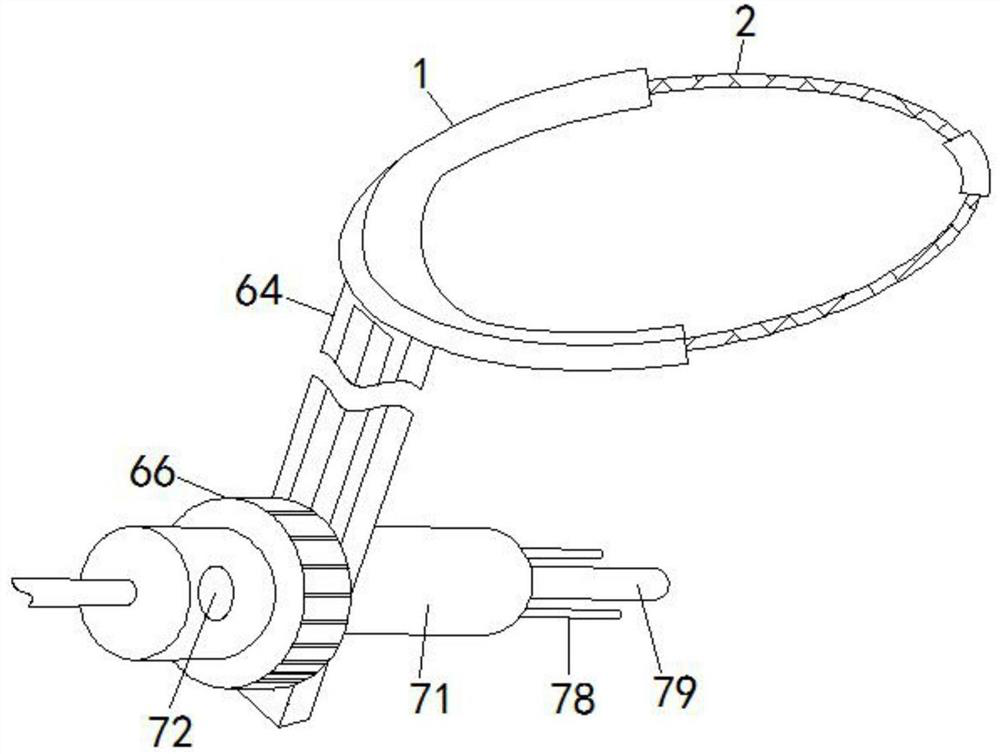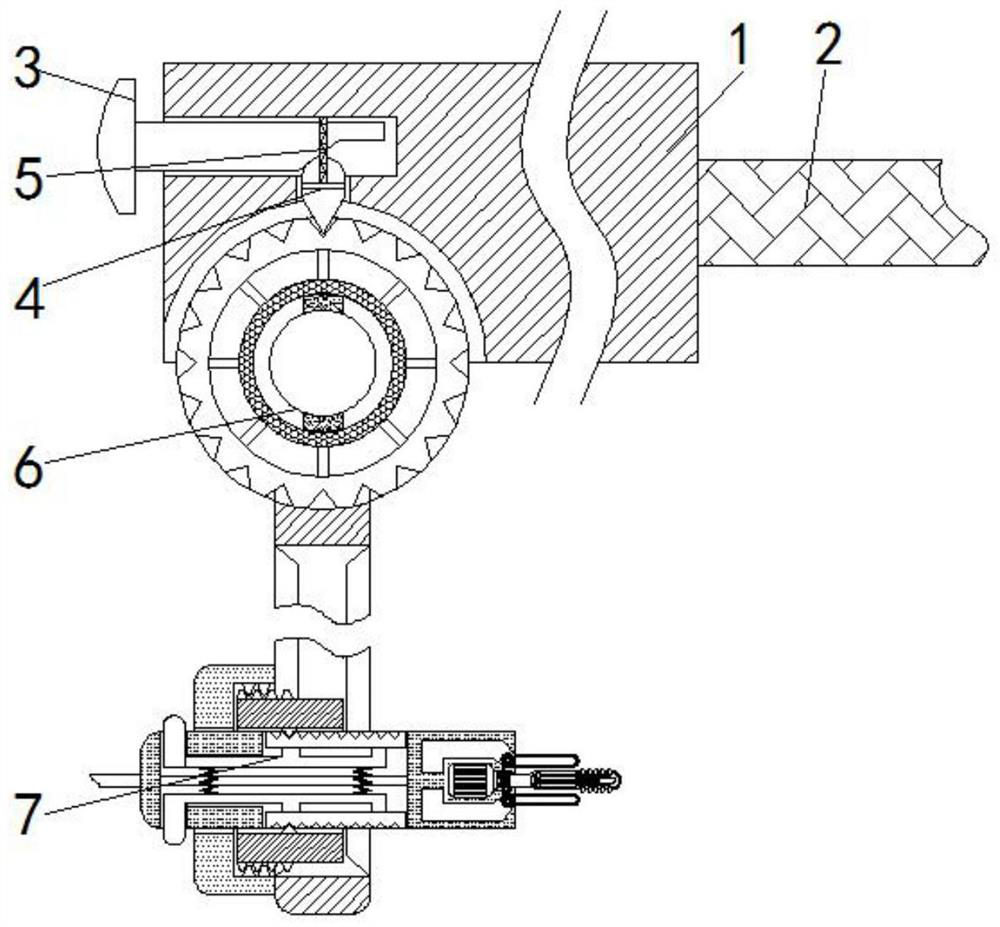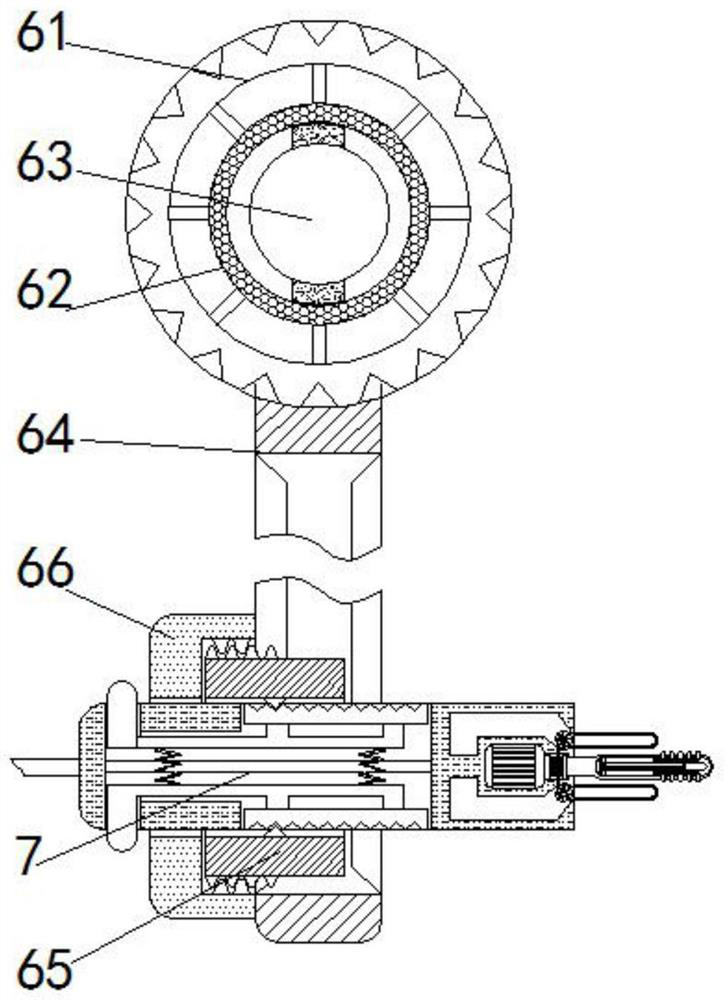Nasal cavity cleaning device for pediatric clinical use
A technology for cleaning device and nasal cavity, which is applied in the field of nasal cavity cleaning device in pediatric clinic, can solve the problems of low safety, blocked nasal mucus and foreign body, and liquid flowing into the throat, etc., and achieves the effects of high safety, prevention of bruising the nasal cavity, and high quality of flushing.
- Summary
- Abstract
- Description
- Claims
- Application Information
AI Technical Summary
Problems solved by technology
Method used
Image
Examples
Embodiment 1
[0025] see Figure 1-3 , a nasal cleaning device used in pediatric clinics, comprising a guard plate 1, a support mechanism 6 is installed on the bottom of the guard plate 1, the support mechanism 6 includes a runner 61, and a positioning groove is provided on the outside of the runner 61, and the positioning block 4 Used together, due to the fixed bracket 64, the runner 61 is hinged at the bottom of the guard plate 1, the inner wall of the runner 61 is fixedly connected with a friction ring 62, the inside of the runner 61 is plugged with a buffer wheel 63, and the bottom of the runner 61 is welded with Support 64, the inside of support 64 is slidably connected with slide block 65, and the inwall of slide block 65 is welded with ratchet, used in conjunction with ratchet plate 73, is used for fixing cleaning gun 71, and the outside thread of slide block 65 is connected with knob 66, in During the cleaning process, when the child's head shakes, the guard plate 1 drives the clean...
Embodiment 2
[0027] see Figure 1-6 , a nasal cleaning device used in pediatric clinics, comprising a guard 1 and a headband 2, the headband 2 is fixedly connected to the right side of the guard 1, the left side of the guard 1 is slidably connected to a slide bar 3, and the guard 1 The inside of the plate 1 is slidingly connected with a positioning block 4, the top of the positioning block 4 is fixedly connected with an elastic rope 5, the bottom of the guard plate 1 is hinged with a support mechanism 6, and the inside of the support mechanism 6 is plugged with a cleaning mechanism 7. The cleaning mechanism 7 includes Cleaning gun 71, the plug of cleaning gun 71 is connected in the inside of slide block 65, and the outside of cleaning gun 71 is slidably connected with button 72, and the right side of button 72 is welded with ratchet plate 73, and the side of button 72 near cleaning gun 71 is welded with The support spring 74, the inside of the cleaning gun 71 is fixedly connected with the ...
Embodiment 3
[0029] see Figure 1-6, a nasal cleaning device used in pediatric clinics, comprising a guard 1 and a headband 2, the headband 2 is fixedly connected to the right side of the guard 1, the left side of the guard 1 is slidably connected to a slide bar 3, and the guard 1 The inside of the board 1 is slidably connected with a positioning block 4, the top of the positioning block 4 is fixedly connected with an elastic rope 5, and the bottom of the guard plate 1 is hinged with a support mechanism 6, which includes a runner 61, and the outer side of the runner 61 is provided with a positioning The groove is used in conjunction with the positioning block 4. Due to the fixed bracket 64, the runner 61 is hinged at the bottom of the guard plate 1, the inner wall of the runner 61 is fixedly connected with a friction ring 62, and the inside of the runner 61 is plugged with a buffer wheel 63. The bottom of the wheel 61 is welded with a bracket 64, the inside of the bracket 64 is slidingly c...
PUM
 Login to View More
Login to View More Abstract
Description
Claims
Application Information
 Login to View More
Login to View More - R&D
- Intellectual Property
- Life Sciences
- Materials
- Tech Scout
- Unparalleled Data Quality
- Higher Quality Content
- 60% Fewer Hallucinations
Browse by: Latest US Patents, China's latest patents, Technical Efficacy Thesaurus, Application Domain, Technology Topic, Popular Technical Reports.
© 2025 PatSnap. All rights reserved.Legal|Privacy policy|Modern Slavery Act Transparency Statement|Sitemap|About US| Contact US: help@patsnap.com



